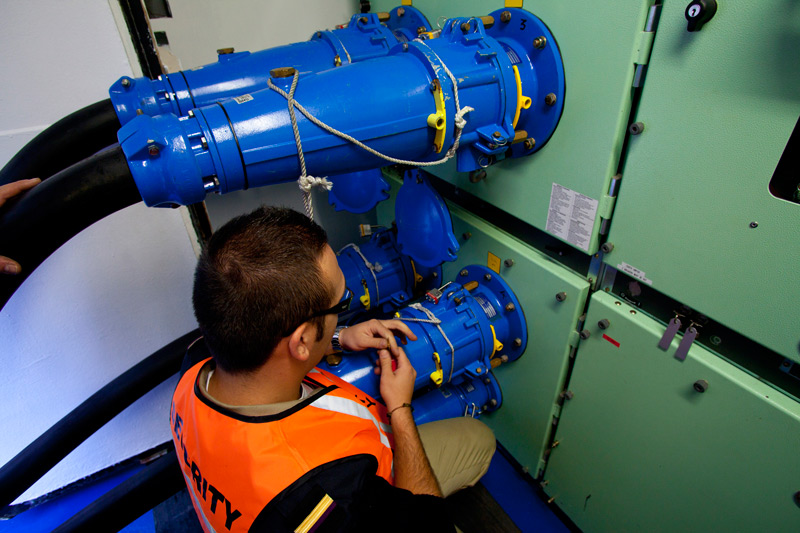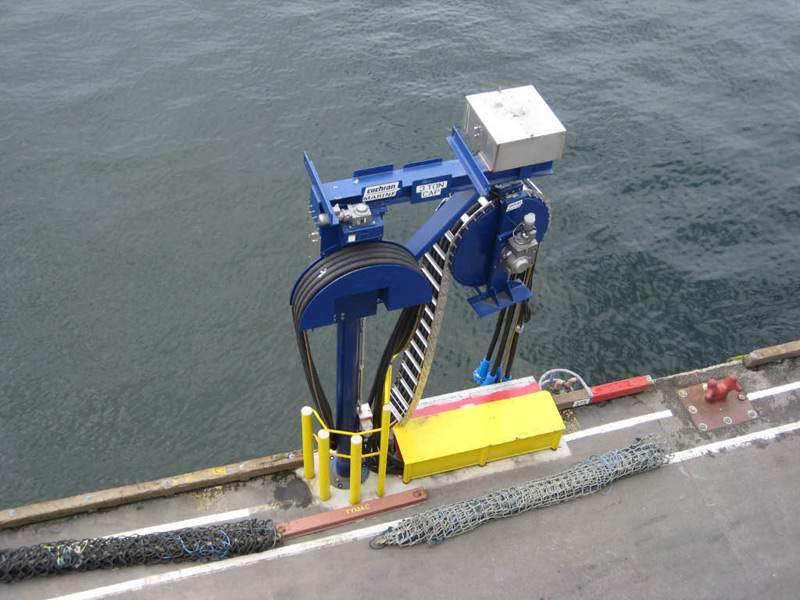 With stricter environmental regulations being introduced in North America and Europe, the cruise industry is working to keep up with innovative solutions and compliance.
With stricter environmental regulations being introduced in North America and Europe, the cruise industry is working to keep up with innovative solutions and compliance.
Contributing to so-called green ports and reduced emissions in metropolitan areas, ships are burning low-sulfur fuel in ports in Europe, according to a European Community directive, while some U.S. ports are offering the opportunity to plug into electric power from shore, thus eliminating ship emissions altogether.
First introduced in Juneau, Alaska, in 2001 by Princess Cruises, shorepower, or so-called AMP (alternative marine power) or cold ironing, is now offered in the major West Coast ports – Vancouver, Seattle, San Francisco, Los Angeles and San Diego, although usually limited to one or two ships at a time.
California will also require that a certain percentage of calls have to plug in, starting in 2014. Next in line to offer shorepower is Brooklyn’s Red Hook terminal in New York.
Europe is lagging behind this development, but there is no reason European countries cannot match North America, according to Robert Ashdown, director of technical, environmental and operational matters for the European Cruise Council. He said that no European ports offer shorepower to cruise ships today and that electric power is not even feasible in some ports.
Meanwhile, plans have been delayed or put on hold in some European ports that still tend to be publicly owned, given the difficult financial circumstances in some countries.
 But progress is being made at the EU level to allow for power to be provided to ships at favorable rates. “Electric shore power remains a port-by-port decision,” Ashdown continued, adding that “some ports, including Civitavecchia, had been working on shorepower, before the financial crisis hit.”
But progress is being made at the EU level to allow for power to be provided to ships at favorable rates. “Electric shore power remains a port-by-port decision,” Ashdown continued, adding that “some ports, including Civitavecchia, had been working on shorepower, before the financial crisis hit.”
Other ports are not considering it at all, including Southampton, where the UK simply does not have enough power to supply cruise ships, he said.
According to Adam Goldstein, president and CEO of Royal Caribbean International, shorepower should only be considered on a situational basis. He noted that even though shorepower is offered in Juneau, for instance, it is only available at one pier, which Royal Caribbean does not use, so the access is very restricted.
“We do not participate in shorepower on an operational basis,” Goldstein said, “but our newer ships can be set up for shorepower.” He added ships spend little time at the pier so the benefit would be relatively limited even if every single pier had shorepower. Royal Caribbean’s goal is to generate as little emissions as possible all the time, Goldstein explained, “and shorepower can at best be a partial answer.”
According to Tom Dow, vice president of public affairs for Carnival Corporation, certain criteria have to be met for shorepower to be viable. “Basically,” he said, “there has to be a supply of reliable power that is also affordable, and not every grid has surplus power. It can also cost millions of dollars to install the necessary cabling to get the power to the pier.
Sometimes the end-cost can be exorbitant. And the port must also work with the utility and the cruise line to come up with a rate that is affordable.
“In the end,” Dow said: “We want shorepower to be cost neutral. We are not asking for subsidies. But we need a slightly lower cost that will allow us, over time, to recover the capital investment in our equipment onboard.”
In Europe, Venice has also been working on shorepower projects and both Oslo and Stockholm offer shorepower for cruise ferries and are “looking into the possibility of offering it to cruise ships.”
At present, out of a worldwide cruise fleet of some 270 ships, 18 are equipped for shorepower.
Excerpt from Cruise Industry News Quarterly Magazine: Summer 2011




